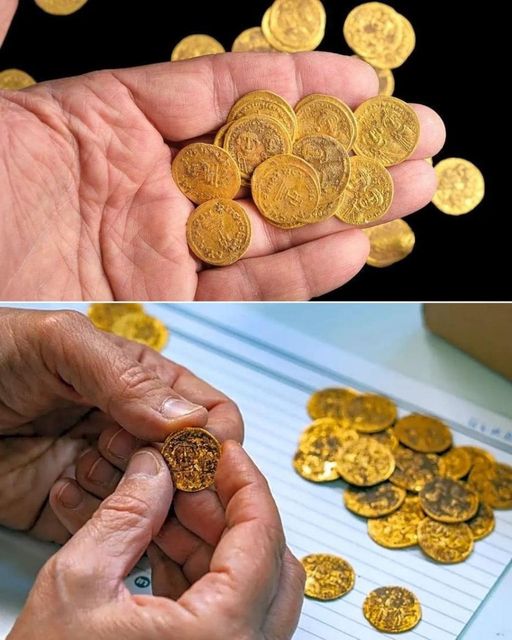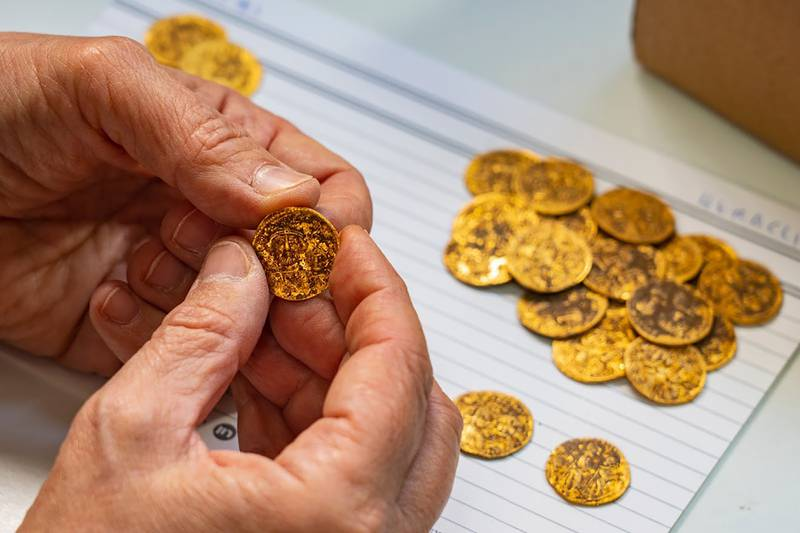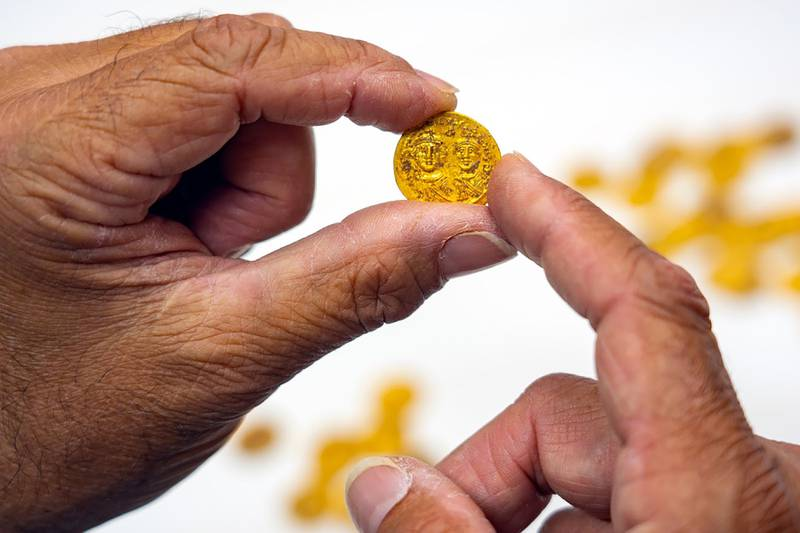Byzantine-era solid gold coins discovered in ancient Caesarea Philippi.


Dozens of gold coins dating back to the 7th century have been found hidden in an ancient wall in a nature reserve, Israeli archaeologists said on Tuesday.
The 44 coins were discovered at Hermon Stream — an area also known as Banias — by a spring at the foot of Mount Hermon in the occupied Golan Heights.
Weighing about 170 grams, they were found hidden in an ashlar stone wall during an excavation of a Roman-era city that also uncovered bronze coins and the remains of buildings, water channels and pipes, Israeli authorities said.
Experts believe they were hidden during the Muslim conquest of the area in 635, towards the end of Byzantine rule in the area.
The Byzantine Empire, the eastern half of the Roman Empire, was the longest-lasting medieval empire, surviving for more than 1,000 years.
The director of the excavation operation, Yoav Lerer, told the BBC the “discovery reflects a specific moment in time”.

An image of Emperor Heraclius and his son on one of the coins.
“We can imagine the owner concealing his fortune in the threat of war, hoping to return one day to retrieve his property,” he said.
“In retrospect, we know that he was less fortunate.
“The discovery of the coin hoard may also shed light on the economy of the city of Banias during the last 40 years of Byzantine rule.”
Some of the coins are believed to belong to Emperor Phocas (602 to 610), but most were of his successor Heraclius (610 to 641), said Dr Gabriela Bijovsky, a currency expert at the Israel Antiquities Authority.
The Heraclius coins date back to the time of the Muslim Conquest.
In the Christian tradition, Banias is a significant place, as it is where Jesus is said to have told the apostle Peter: “On this rock, I will build my church.”

Some of the coins feature the image of Emperor Phocas but most are from the time of his successor Heraclius.



